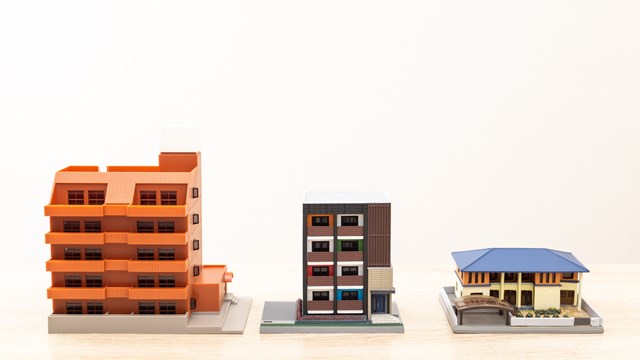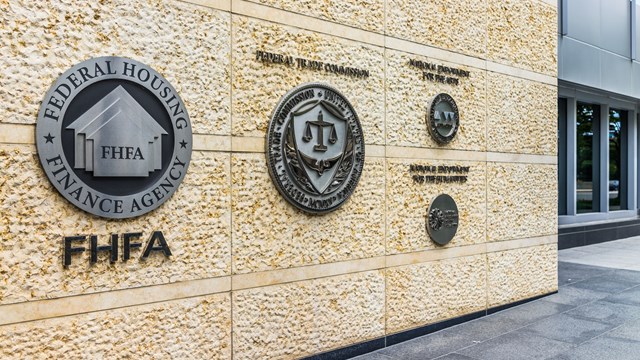Providence is developing a reputation. After decades of depression and a certain ignominy, the city is once again finding its feet. In spite of a struggling national economy, overall this up-and-comer is capitalizing on housing, business and the arts. Now widely-known as the “Renaissance City,” people from all over the world are flocking to its shores to live, visit or do business.
Lowly Beginnings
During the period from the 1950s tothe 1980s, Providence’s best-known economic dealings were connected with organized crime. Although some rebuilding was initiated in the 1970s, the city’s vision was still blurry. But in the 1990s the city began to turn around. Beginning with Mayor Vincent “Buddy” Cianci, Jr.’s famous redesigning of Providence and his intentional showcasing of the arts, Rhode Island’s capital began to flourish again. Unfortunately, in the spirit of seedier Providence tradition, the former mayor himself has now served some jail time. Following his release in 2007, however, he maintains a level of popularity in this city for his reconstruction of it almost from the ground up, whether he cut some corners to do so or not.
Roger Williams, the original founder of Providence, may have had something different in mind for the city, although when he founded it, he himself was on the run from the prevailing legislature. After his exile from the Massachusetts Bay Colony, he settled in a well-watered area—on the coast, surrounded by rivers. His eyes saw the potential of the spot, and having acquired a title from the local Narragansett tribes, the settlement was free to grow.
However, due to land disputes and agricultural difficulty, the city did not really come into its own until after the Civil War. The influx of immigrants from the South and from Europe, as well as strong silverware manufacturing and textile industries, caused the city’s economy and significance to boom. But in the 1920s, particularly with the decline in textiles, the city itself began to settle into decline, only to return to glory through the vision of former Mayor Cianci.
Rebirth
The redesign of Providence involved uncovering previously hidden rivers, and conversely hiding part of the existing railroad. Now the city has been featured in an NBC sit-com of the same name. Residents of other New England locales flock to Providence in the summers to witness the WaterFire events along the river running through the city. International business people journey to luxury hotels and the Rhode Island Convention Center, andshoppers can find whatever they are looking for at the Providence Place Mall. But it is not just the physical appearance of Providence that is being renewed.
Current mayor David Cicilline has taken his predecessor’s reforms further out into the community, but also within City Hall. When he took office in 2002, Cicilline delineated five priorities for the city: government integrity, strong neighborhoods, great schools, safe streets, and a dynamic economy. With this in mind, the majority of union workers now have new, updated professional contracts. Government services are monitored. Partnerships are being forged between city police and neighborhood residents, with the result that violent crime rates have dropped considerably.
Meanwhile, in the neighborhoods themselves, many after-school programs exist for children of all ages, including programs designed to encourage inner-city high-schoolers to go on to college. Public schools are instituting reforms, and, City Hall sources quite naturally boast, “two independent studies showedProvidence Schools transforming into one of the most financially efficient urban districts in New England.”
Emphasis on Art
City government has also placed a heavy emphasis on the power of art to transform and unify a community. The Department of Art, Culture and Tourism is an integral part of City Hall. One of the most famous and popular works of art in the city is WaterFire. A sculpture composed of a series of bonfires in Waterplace Park, it burns on scheduled nights just above the surface of the river. The visual aspect is augmented by the passage of lantern-lit boats, fire-tenders, and music, and takes on the status of an event, not simply a static sculpture. But to imagine that even WaterFire is all that Providence has to offer is to be woefully misled. The city’s official website alone lists over forty art galleries, not including the various museums whose exhibits range beyond the strictly artistic. As the city is home to numerous and renowned colleges and universities (Brown University, Johnson and Wales, Rhode Island School of Design and Roger Williams University among them), the artistic, culinary and intellectual communities are hardly lacking for contributors. The schools and city government havealso forged amicable relations and partnerships, working together to better the city.
Because of renewed trust in the city government, more businesses are investing in Providence, too. The city is a major center for jewelry and silverware as it was in the 1800s, and yet it keeps its progressive edge by headquartering Nortek, Textron and GTECH. The deep-water Port of Providence is still active, processing heavy cargoes such as cement, chemicalsand scrap metal.
Furthermore, the city is easy to get to, and around. Route 146 links Provi-dence with Worcester, Massachusetts, while Interstate highways 95 and 295 are even more far-reaching arteries. The city is also served by Amtrak trains, an MBTA train direct to Boston, Peter Pan and Greyhound coach lines, access to Boston’s Logan Airport, and its own airport, T.F. Green. The Green airporthas, like the city, been enjoying an increase in popularity, thanks to local citizens and flyers seeking alternatives to “Big Dig” construction delays at Boston’s Logan airport.
As for traversing the city, one pleasant, environmentally-friendly and eminently possible way of doing so is on foot. The redesign of the city has taken pedestrians into account, and, as the city itself has a relatively small footprint (18 square miles), walking or biking are valid and popular options. However, residential parking is also available, as are local buses which even offer service to T.F. Green.
Residents
The increased investment and variety of industry naturally support and grow the economy, making Providence an increasingly appealing place to live for a diversity of people. The list of ethnic communities which make their mark on the city is topped by theIrish and the Italians, while a significant presence of Latinos from various nations of origin, and of Swedes and Portuguese, is also felt. Although some of these communities are long-established Providence fixtures and others are newer, many ethnic neighborhoods and community associations of all types exist. The city also has the distinction of having an unusually young population; most recent records show the median age to settle at around 28.
Across the city, there are 2,817 residential condominiums, versus 14,290 single-family, and 13,965 multi-family homes. There are also 874 combination buildings, serving both commercial and residential purposes. As one might expect in an artistic and collegiate community, evenwithin condominiums and co-ops, living options are diverse and often appealingly unique. For example, AS220, a significant art community “downcity,” has bought the historic Dreyfus Hotel from Johnson and Wales University, converting the lower level into a restaurant and the upper three levels into living spaces for artists accepted by application.
Luxury Condos Downtown
Amidst the bustle of that same general area, luxury condominiums and lofts are also going up. Westin Hotels have opened up a high-rise dwelling with all the amenities of a four-star hotel, but each suite is a home custom-designed to its residents' wishes.
Meanwhile, with its own condominium prices ranging between $168,000 and $1.6 million, the Armory Revival Company is offering residencesfor people across the economic spectrum. Pearl Street Lofts is just one of their up-market projects; formerly a mill from the Federalist period, much of the building has been converted into top-of-the-line condominiums. On the other hand, the company also won a project with the Providence Housing Committee to tear down some existing inner city tower-block apartments and create scattered-site low-income housing. Armory Revival created these homes in a Victorian style, with nice yards and attractive landscaping.
All three of the owner-partners at Armory are preservationists as well as developers, and are intent on contributing to communities in tangible, visible ways. While they have no qualms about tearing down an old eyesore, they are committed to refurbishing vintage buildings of value, and also to constructing new buildings which fit in with their general surroundings. As owner B.J. Dupre says, “If there’s demolition, what you put back has to be an improvement.” They have no generic building plans, he says, but instead hire local architects who work the residences to fit into their immediate surroundings. No matter where in the spectrum of prices an Armory dwelling falls, you can be sure that you are getting your money’s worth. The company takes full advantage of both federal and Rhode Island state historical tax credits so that they can create high-quality restorations for their buyers.
While places like the Residences at the Westin speak to Providence’s aspirations and strides towards being a world-class city, the Armory fits in to the city’s artistic and communal sensibilities, with its sense of style and community focus. AS220 and the Arts District take this focus a step further, with a more specific target population. As its founder had envisioned, Providence is now home to a great diversity of peoples. When one looks at progress in the city now, it comes as no surprise that founding father Roger Williams named it in gratitude for the provision of the God he believed had led him there.
Jennifer Grosser is a children’s book author and freelance writer living in Charlton, Massachusetts.







Leave a Comment